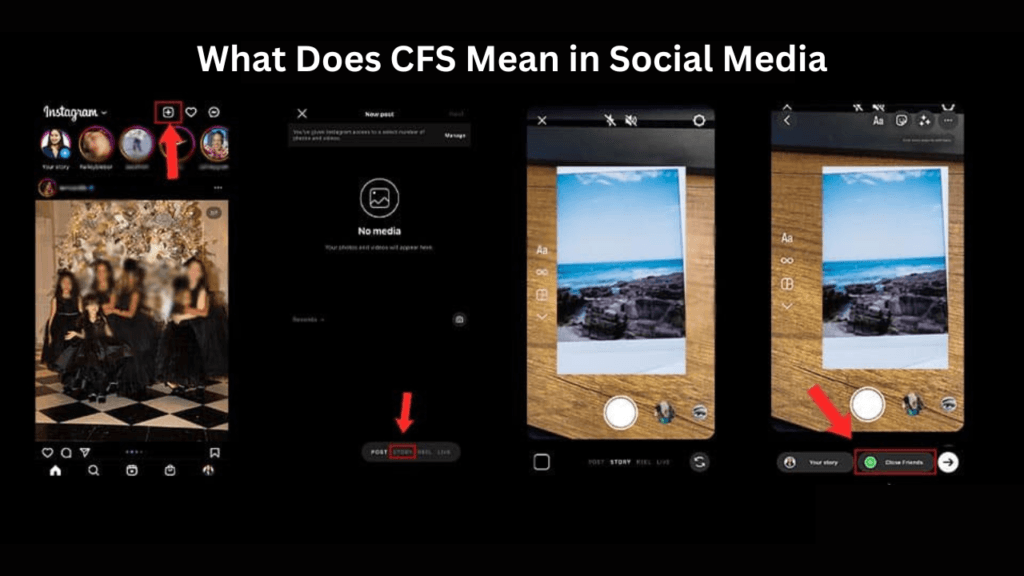In today’s digital age, social media has become an integral part of our daily lives. With the rise of social media platforms, we have seen the emergence of various new abbreviations and acronyms, which can be difficult to keep up with. One such acronym that has gained popularity in recent years is CFS. If you’re unfamiliar with CFS, you may be wondering what it means and why it’s used.

In this article, we will explore the meaning and usage of CFS on social media, and why it’s important to understand these types of acronyms in the world of social media.
What Does CFS Stand For?
Explanation Of The Acronym:
CFS is an acronym that stands for “Chronic Fatigue Syndrome”. It is a medical condition that affects a person’s energy levels and causes them to experience ongoing fatigue and exhaustion. The term CFS is often used by people on social media as a shorthand to describe their own experiences with chronic fatigue, or to express empathy and support for others who are struggling with the condition.
Origin And History Of CFS:
The term “Chronic Fatigue Syndrome” was first coined in the 1980s to describe a cluster of symptoms that were not well understood at the time. It was initially referred to as “yuppie flu” due to its association with high-income individuals, but this term is now considered derogatory. Over time, researchers have identified more specific criteria for diagnosing CFS, and the condition is now recognized as a serious illness that affects millions of people around the world. The term CFS is commonly used on social media to discuss experiences related to chronic fatigue and to raise awareness about the condition.
Common Uses Of CFS on Social Media
Explanation Of The Acronym:
CFS stands for Chronic Fatigue Syndrome, a complex and debilitating medical condition characterised by extreme fatigue that does not improve with rest and can worsen with physical or mental exertion. Other common symptoms of CFS include joint pain, headaches, difficulty concentrating, and memory problems.
Origin And History Of CFS:
The origins of CFS can be traced back to the 1930s, when a viral illness known as “epidemic neuromyasthenia” swept through parts of the world, leaving many people with persistent fatigue and other symptoms. However, it wasn’t until the 1980s that the term “Chronic Fatigue Syndrome” was coined to describe a similar illness that was affecting a growing number of people. Since then, researchers have made significant strides in understanding the underlying causes of CFS, although much remains to be learned about this complex condition.
Similar Acronyms to CFS
Comparison With Other Social Media Acronyms:
CFS is a medical condition, while many social media acronyms are related to online communication and social interactions. For example, LOL (laugh out loud) and BRB (be right back) are used to convey emotions or status updates during online chats, whereas CFS refers to a serious medical condition that can significantly impact a person’s quality of life.
Differences Between CFS And Other Related Terms:
CFS is often used interchangeably with other terms, such as myalgic encephalomyelitis (ME) or ME/CFS. While there is significant overlap in symptoms and diagnostic criteria, these terms are not synonymous. ME/CFS acknowledges the significant neurological and immune system dysfunction associated with the condition, while CFS is more focused on the symptom of fatigue. Additionally, other conditions such as fibromyalgia and depression may share some symptoms with CFS, but have distinct diagnostic criteria and treatment approaches.
Why Do People Use CFS on Social Media?
Motivations Behind Using CFS:
- CFS (Compact Fluorescent Lamp) is an energy-efficient alternative to incandescent bulbs
- The main motivation behind using CFS is to reduce energy consumption and lower electricity bills
- CFS also has a longer lifespan than traditional bulbs, reducing the need for frequent replacements
- Environmental concerns are another motivation, as CFS emits less greenhouse gases than incandescent bulbs
Psychological Factors Behind Social Media Acronyms:
- Social media acronyms are often used to convey complex emotions and ideas in a concise way
- Acronyms like LOL and ROFL are used to express humor and amusement
- They can also serve as a form of group identity, as people who use similar acronyms may feel a sense of belonging
- The use of acronyms can also be seen as a way to save time and effort in communication, as typing out full words and phrases can be time-consuming.
CFS In The Context Of Chronic Illness Communities
How CFS is Used With Chronic Illnesses:
CFS is often used within online communities of people with chronic illnesses as a way to describe their experiences with fatigue. These communities can provide a source of support and understanding for those with CFS, as well as a platform for advocacy and awareness-raising.
Unique Challenges Faced By Similar Conditions:
CFS and other chronic illnesses can present unique challenges for those living with them, such as difficulty accessing medical care, navigating social relationships, and managing daily activities. These challenges can be compounded by misunderstandings and stigmatisation related to the illness.
Conclusion:
Understanding social media acronyms like CFS can be crucial for effective communication and meaningful engagement on these platforms. While CFS has a medical definition, it has also taken on a social meaning within the context of online communities of people with chronic illnesses.
By understanding the unique challenges faced by those with CFS and other similar conditions, we can work towards greater awareness, empathy, and support for those living with these conditions. As social media continues to evolve and shape our communication, it is important to remain vigilant and responsible in our use of language, and to foster an inclusive and understanding online environment for all.